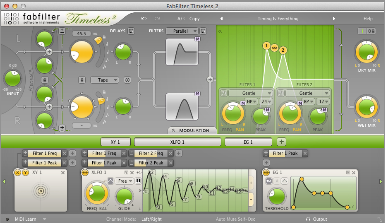idiotSavant wrote:All, thanks for the replies.
I do not have Notion reverb running. I use VSL MIRPro for reverb.
I have tried adding additional measures. It doesn't help, I still get the choppy bits.
The only fix I've found is to add a couple of extra measures and a note in the last measure. I can then edit the audio file to remove the last note, which is still giving the choppy bits.
It's a pain. I've posted here long ago about the audio export function. I'm hoping there are some improvements to that with the Presonus acquisition.
Other than either (a) having too much stuff in a single NOTION 4 score or (b) having the NOTION 4 Audio Buffer Size set too low (or some other buffer or parameter in the DAW application), I have not encountered this problem . . .
I use Addictive Drums and Addictive Keys (XLN Audio), Cyclop (Sugar Bytes), Kontakt 5 (Native Instruments), MachFive 3 (MOTU), and some of the NOTION 4 native virtual instruments, as well as VST effects plug-ins made by FabFilter Software Instruments, IK Multimedia, and Wave Arts, and I do everything on the Mac . . .
THOUGHTSIt might be a problem with the Vienna Symphonic Library (VSL) software, and you could do some experiments to determine this . . .
(1) Disable the VSL reverb and do an export . . .
If there are no problems with this one, then the culprit is the VSL reverb, but if there are problems, then the next experiment can provide clues . . .
(2) Create a new NOTION 4 score but use non-VSL instruments and no reverb (NOTION 4, VSL, or otherwise) . . .
If there are no problems with this second experiment, then the culprit probably is the VSL engine or player . . .
However, it depends on whether you are using only Mac OS X CoreAudio or an external digital audio and MIDI interface like the MOTU 828mk3 Hybrid, which is what I use most of the time . . .
There are a few parameters that can be set via Mac OS X Audio MIDI Setup, but primarily just the sample rate and bit resolution, which for playback should be 44,100-Hz at 16-bits . . .
This might be part of the problem, depending on the way you have the NOTION 4 "Bit-depth" set when you do the "Audio Export" . . .
I set the "Bit-depth" to "16-bits" based on the my understanding that NOTION 4 generates audio at standard CD quality, which is 44,100-Hz at 16-bits, and this is the value I use for the DAW application, as well, which usually is Digital Performer 8.05 (MOTU) . . .
I have not verified the part about NOTION 4 generating audio at standard CD quality, so perhaps higher bit-resolutions are new, except that NOTION 3 also had the option for "Audio Export" to have 16-bit, 24-bit, or 32-bit for WAVE audio files, which is the audio format that is used . . .
In this context, if the actual audio generated is standard CD quality but it is padded or extended arbitrarily to 24-bit or 32-bit resolution, then instead of improving the quality of the audio, it does the opposite, since when there only are 16-bits of data, expanding it to 24-bits or 32-bit of data only inserts meaningless information, which maps to increased noise, hiss, and so forth . . .
Hence another experiment might provide clues if you are exporting audio at 24-bits or 32-bits rather than at 16-bits . . .
(3) Export the audio at 16-bits and see what happens . . .
ADDITIONAL THOUGHTSSome folks will suggest that they can determine the difference in 24-bit or 32-bit audio as contrasted to 16-bit audio, but they probably do not have calibrated full-range studio monitor systems and are just repeating something they read somewhere which was written by yet another person who had no actual idea . . .
In some respects, it appears logical that 32-bits is better than 24-bits which is better than 16-bits, but if you are listening to the music played through a commercial-off-the-shelf studio monitor system, then even if there were a difference, it would be frivolous . . .
This is an excellent video done by Ethan Winer which contains part of a presentation he made at the Audio Engineering Society (AES) Convention in 2009, and it explains the information about bit resolution and a lot of other stuff in a way that might be easier to understand than the way I explain it, which is fabulous . . .
Audio Myths Workshop (Ethan Winer et al.) -- AES Show 2009 - YouTube videoFabulous! 
